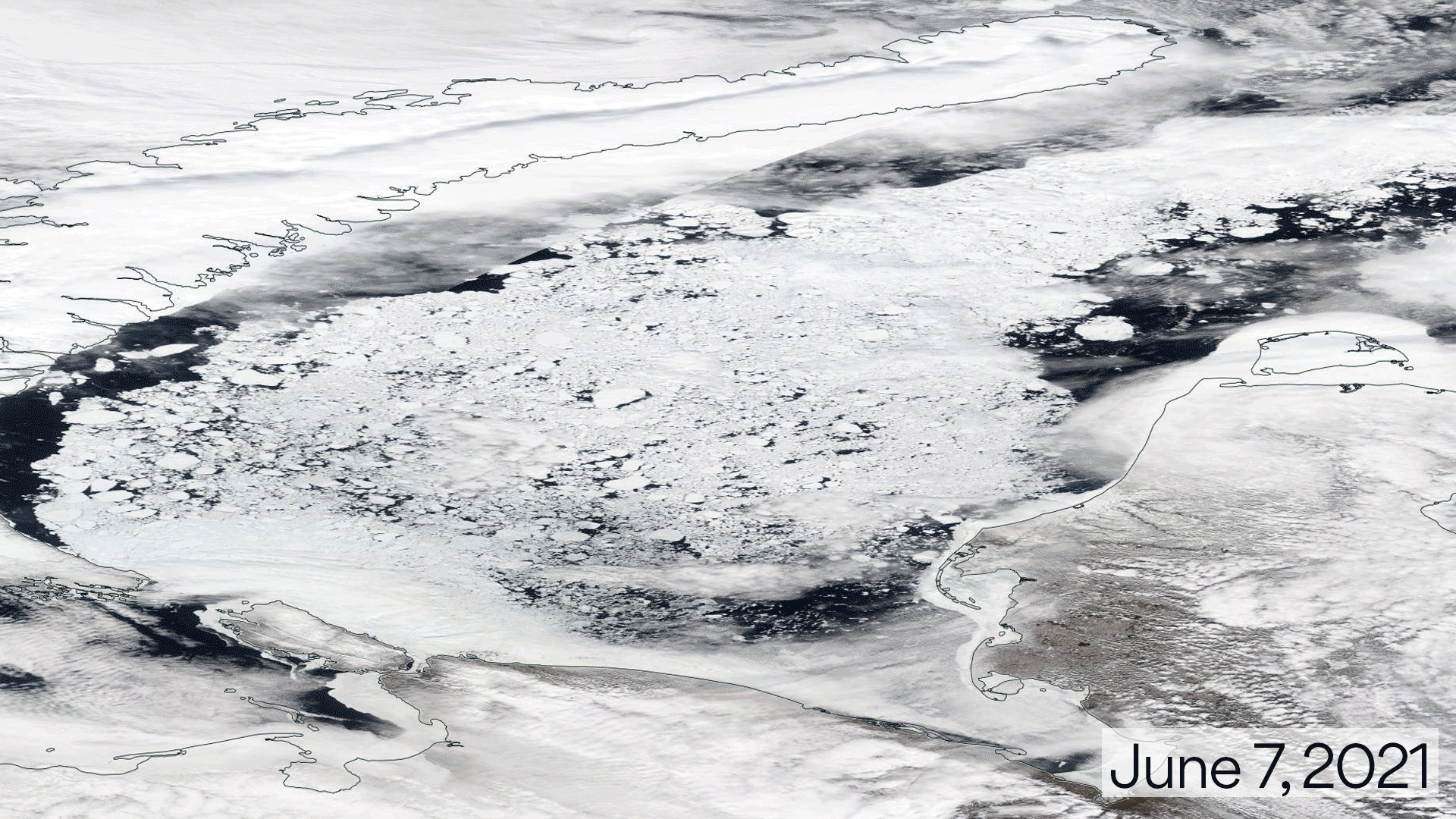Arctic heat roasts Finland and Russia, melts sea ice

Sea ice disappears from the Laptev Sea north of Russia in June 2021.
NASA via Axios Visuals
Andrew Freedman
Wed, June 23, 2021
An intense and expansive heat wave has gripped parts of Siberia, northwestern Russia and Scandinavia, inducing a record plunge in sea ice cover in the Laptev Sea, which is part of the Arctic Ocean.
Why it matters: Due largely to human activities such as fossil fuel burning and deforestation, the Arctic is warming at a rate more than twice as fast as the rest of the globe.
Sweeping changes there are reverberating beyond in the form of melting permafrost, increased wildfires and altered weather patterns.
In addition, sea ice melt is turning the Arctic into an increasingly competitive space for shipping, oil and gas drilling, and military posturing between the U.S., Russia and China.
The details: In parts of north-central Siberia, temperatures have reached 45°F above average for this time of year, while other parts of Arctic Russia and Scandinavia have baked in record heat as well.
Some of these same areas saw record heat and wildfires grip the landscape and melt adjacent sea ice last year.
In Helsinki, the temperature did not drop below 72.5°F on the night of June 21-22, setting the national record for the highest minimum temperature recorded in June.
Several locations in Finland set monthly June high-temperature records, and the national June record almost fell Tuesday.
Record heat also affected Belarus and Latvia.
What's next: Scientists are keeping close tabs on climate trends in Siberia due to the massive amounts of carbon and methane stored in now-melting areas of permafrost.
Also, researchers are monitoring the 2021 Arctic sea ice melt, which will hit its annual minimum extent in September or early October.
Andrew Freedman
Wed, June 23, 2021
An intense and expansive heat wave has gripped parts of Siberia, northwestern Russia and Scandinavia, inducing a record plunge in sea ice cover in the Laptev Sea, which is part of the Arctic Ocean.
Why it matters: Due largely to human activities such as fossil fuel burning and deforestation, the Arctic is warming at a rate more than twice as fast as the rest of the globe.
Sweeping changes there are reverberating beyond in the form of melting permafrost, increased wildfires and altered weather patterns.
In addition, sea ice melt is turning the Arctic into an increasingly competitive space for shipping, oil and gas drilling, and military posturing between the U.S., Russia and China.
The details: In parts of north-central Siberia, temperatures have reached 45°F above average for this time of year, while other parts of Arctic Russia and Scandinavia have baked in record heat as well.
Some of these same areas saw record heat and wildfires grip the landscape and melt adjacent sea ice last year.
In Helsinki, the temperature did not drop below 72.5°F on the night of June 21-22, setting the national record for the highest minimum temperature recorded in June.
Several locations in Finland set monthly June high-temperature records, and the national June record almost fell Tuesday.
Record heat also affected Belarus and Latvia.
What's next: Scientists are keeping close tabs on climate trends in Siberia due to the massive amounts of carbon and methane stored in now-melting areas of permafrost.
Also, researchers are monitoring the 2021 Arctic sea ice melt, which will hit its annual minimum extent in September or early October.
No comments:
Post a Comment